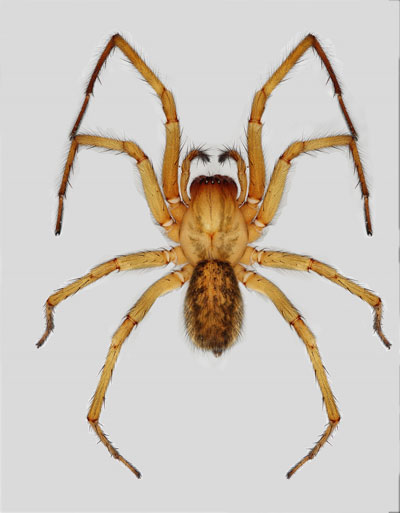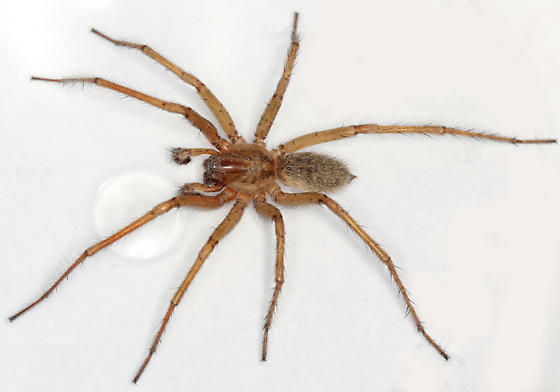Hobo Spiders, Eratigena agrestis

Female hobo spider (Eratigena agrestis). Photo by Laurie Kerzicnik, MSU Extension. Larger image (6.1MB).

Male hobo spider (Eratigena agrestis). Photo by L. Elliott, Bugguide.net. Larger image (39K).
During late summer and early fall it is normal for spiders to enter buildings and homes. This includes hobo spiders which have long been prevalent in Montana. Common misconceptions about the hobo spider often cause unnecessary concern.
Things to Know
- Spider bites are rare. Generally, their fangs are small and lack the musculature to pierce the human skin. They typically only bite if threatened or if trapped in clothing, shoes, etc.
- There is no conclusive evidence that hobo spider venom causes necrosis in humans; and a large body of scientific research that proves it does not.
- The most common cause for necrotic lesions (wounds not healing) in the West is a bacterial infection called MRSA (Methicillin Resistant Staphylococcus aureus ) infection. MRSA and other bacteria can enter the body through punctures which could include a spider bite, as well as many other more likely wounds. If a wound from any bite or scratch becomes inflamed, or if soreness persists, medical care should be sought as secondary infection that enters the body through the wound may need to be treated.
- Hobo spiders are not known to be naturally aggressive in their native area or in the United States. Their nickname, the aggressive house spider, comes from an errant translation of their scientific name, Eratigena agrestis. The Latin translation of agrestis is not aggressive, but rather “rural” or “in the fields”.
Further Information
To learn more about hobo spiders, contact MSU Extension arthropod diagnostician Dr. Laurie Kerzicnik. If you suspect hobo spider infestation on your property or have an insect sample, contact your local extension agent, the Schutter Diagnostic Lab at Montana State University, or the Montana Department of Agriculture.
This August 2021 fact sheet is also available as a Printable PDF (1.4MB).
Disclaimer: These recommendations are provided only as a guide. It is always the pesticide applicator’s responsibility, by law, to read and follow all current label directions for the specific pesticide being used. The authors and Montana State University assume no liability resulting from the use of these recommendations. The Montana State University Extension Service is an ADA/EO/AA/Veteran’s Preference Employer and Provider of Educational Outreach.
